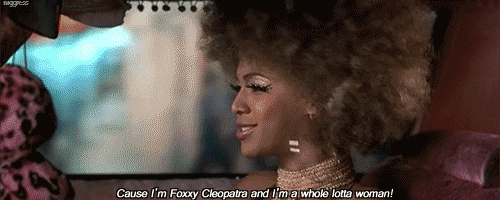Physics is about elegance. That doesn’t mean putting on a monocle to do math, though it couldn’t hurt.
Physicists believe that the universe is governed by simple laws that can be described mathematically: falling objects accelerate towards the ground at 9.8 meters per second per second, light travels at 186,000 miles per second, and Drake has anywhere from 10 to 100 bands at any given time. Accordingly, there’s a rule of thumb with new equations in physics: anything that is the simplest and most elegant is probably right.
Following in the spirit of that elegance, scientists have found there to be four forces that dictate all physical interactions: gravity, electromagnetism, weak nuclear force and strong nuclear force.
All due respect to elegance, I’m going to add another fundamental force: Beyoncé, because let’s get real.
With regards to the four forces accepted by science (so far), they essentially lay out the rules for every physical interaction ever. Light, objects falling, people not spontaneously exploding: pretty much anything you could think of can be described by one or more of these fundamental forces.
First off, gravity. Gravity is a favorite of physicists. Isaac Newton was the first to take a crack at gravity: in 1687 he published his theory of universal gravitation in his larger work Philosophiæ Naturalis Principia Mathematica, which is Latin for “This Book Proves That I’m Smarter Than The Rest of You.” It outlined the basics of what we know about gravity today, but Einstein in 1915 really finished it off in his theory of Relativity. What we’re pretty sure gravity is as of today is this: space, as Einstein figured and was later pretty much proved, can be bent, and matter is what does the bending. What happens inside of the bent part of space is due to gravity.
Think of it like this: when a trampoline is empty, it’s flat. When you put something heavy in the middle of it, say a brick, the trampoline curves around that brick and makes a little valley. If you put, say, a rubber ball at the edge of the brick’s valley, the ball will fall down the valley.
Space is three-dimensional, as opposed to the two-dimensional surface of the trampoline, but that’s the short version of how gravity works in space. Whenever something falls, it’s being pulled to the center of Earth’s “gravity valley,” and things all fall towards the center of Earth because the bottom of the three-dimensional “valley” is at Earth’s center. It’s a little mind-bending.
Next is the electromagnetic force. Study of electromagnetism has been around for a long time, the guy who mostly figured it all out was one Charles-Augustin de Coulomb. Electromagnetism is actually two different forces rolled into one: electrostatic and magnetic forces (I know, it’s a leap). Unlike gravity, electromagnetism can be attractive, pulling things together, or repulsive, pushing things apart.
In the electrostatic realm, those things are particles with either a positive or negative charge. Positively charged particles are attracted to negatively charged particles, while two positively charged particles will repel each other—same with two negatively charged particles. Meanwhile, magnetic objects always have a positive and negative end (like, y’know, magnets), but the same thing applies: similar charges repel, and opposite attract. This is where that phrase came from! It’s one of the few physics-related things that are applicable to dating. Other things include focus, friction, and not being a physics nerd.
Thanks to the electromagnetic force, atoms retain their structure because of their charge
And objects (including humans) don’t spontaneously fly apart. Thanks, electromagnetic force.
Until fairly recently, scientists thought that these two forces, gravity and electromagnetism, were the only forces. However, thanks to recent discoveries and advances in technologies, physics has undergone a total transformation, all in the last few decades. All of these things have opened up whole fields of study. It’s like when Beiber dropped “Purpose” out of nowhere and the world was forever changed—you don’t need to be sorry, Justin. It was like that, except with physics.
One reason that physics was so changed is because with the new technologies we were able to observe incredibly rare and incredibly short-lived particles that we can see only briefly because they “decayed”—turned into other particles—so rapidly they couldn’t be observed by previous technologies.
They decayed thanks to the weak nuclear force, another of the four fundamental forces. We couldn’t detect it before because we never saw it do anything before, as we didn’t have the tech to see the particles it created. However, it doesn’t exist solely to frustrate physicists—without it, the sun wouldn’t work. Let me explain: the weak nuclear force makes particles to turn into other particles, which causes, among other things, fusion—the process by which the sun gets its fuel. So, no weak nuclear force, no sun.
Thanks, weak nuclear force.
The weak nuclear force’s partner in crime, strong nuclear force, was discovered around the same time as its buddy. While the electromagnetic force holds atoms together, the strong nuclear force holds particles together—the stuff that makes up atoms. Strangely, it’s the strongest of all the fundamental forces, even though it acts across a really small distance. More strangely, gravity is the weakest of all the fundamental forces, which gets stranger still when you consider how massive the gravitational pull of, say, a black hole is. Even more strangererly—actually I don’t have anything else on that, I was just wondering if I could get away with writing “strangererly.”
So that’s them, the forces that keep us from falling off the earth — and keep our bodies from flying apart.
Fantastic.























